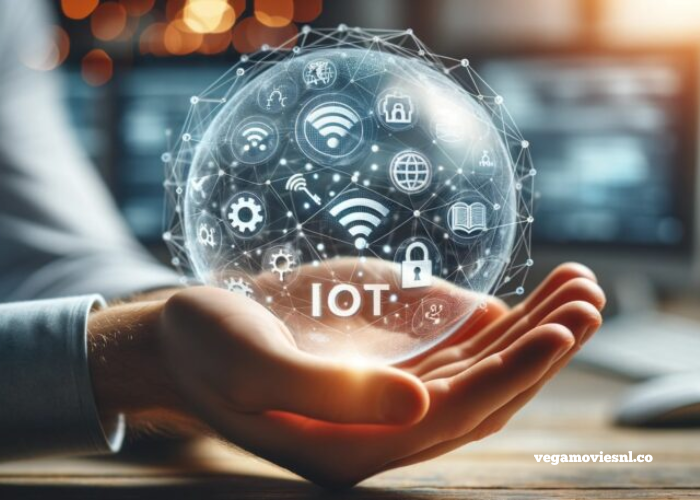In the vast landscape of technological advancement, two prominent acronyms have emerged as game-changers: AI (Artificial Intelligence) and IoT (Internet of Things). These innovations have not only revolutionized industries but have also transformed the way we live, work, and interact with our surroundings. As we delve into the intricacies of these technologies, it becomes evident that their evolution has been instrumental in shaping the modern world.
The Emergence of Artificial Intelligence
Artificial Intelligence, once a realm confined to science fiction, has now become an integral part of our daily lives. It refers to the simulation of human intelligence processes by machines, encompassing tasks such as learning, reasoning, and problem-solving. The journey of AI traces back to the 1950s when pioneers like Alan Turing laid the groundwork for its development.
Over the decades, AI has undergone significant advancements, driven by breakthroughs in machine learning, neural networks, and deep learning algorithms. These innovations have empowered machines to analyze vast amounts of data, recognize patterns, and make informed decisions with minimal human intervention. Today, AI applications span diverse domains, from virtual assistants like Siri and Alexa to sophisticated autonomous vehicles and predictive analytics tools.
The Rise of the Internet of Things
Parallel to the ascent of AI is the proliferation of the Internet of Things. IoT refers to the interconnected network of devices embedded with sensors, software, and other technologies, enabling them to collect and exchange data seamlessly. The concept gained momentum in the early 2000s with the vision of a “smart” world where everyday objects could communicate and collaborate intelligently.
The evolution of IoT has been propelled by advancements in wireless connectivity, miniaturization of sensors, and cloud computing infrastructure. This convergence of technologies has facilitated the development of smart homes, wearable devices, and industrial automation systems.
From monitoring health vitals to optimizing energy consumption, IoT has unleashed a wave of innovation, driving efficiency, and convenience across various sectors.
Convergence and Synergy
While AI and IoT have distinct origins and applications, their convergence has unlocked new frontiers of possibility. The marriage of AI’s cognitive capabilities with IoT’s data-driven insights has given rise to intelligent systems capable of autonomous decision-making and adaptive behavior. This synergy is evident in smart cities, where AI algorithms analyze IoT-generated data to optimize traffic flow, manage resources, and enhance public safety.
Moreover, AI-powered analytics enhance the value of IoT data by extracting actionable insights and predicting future trends. For instance, in agriculture, AI algorithms analyze sensor data to optimize irrigation schedules, detect crop diseases, and improve yields. Similarly, in healthcare, AI-driven diagnostics leverage IoT-enabled wearables to monitor patient health in real time, enabling timely interventions and personalized treatments.
Challenges and Considerations
Despite their transformative potential, AI and IoT also pose significant challenges and considerations. Chief among these is data privacy and security, as the proliferation of connected devices increases the risk of cyber threats and unauthorized access. Moreover, ethical concerns surrounding AI, such as algorithmic bias and job displacement, necessitate careful deliberation and regulatory frameworks to ensure responsible deployment and mitigate societal risks.
Furthermore, interoperability and standardization remain key hurdles in realizing the full potential of AI and IoT ecosystems. As the number of devices and platforms continues to proliferate, interoperable standards are essential to enable seamless communication and integration across diverse environments. Initiatives such as the development of open-source frameworks and industry consortia are crucial in fostering collaboration and driving interoperability efforts.
The Future Landscape
Looking ahead, the evolution of technology in today’s world is poised to accelerate further, driven by continuous innovation and cross-disciplinary collaboration. AI and IoT will continue to converge with other transformative technologies such as 5G connectivity, edge computing, and blockchain, unlocking new use cases and business models.
In the realm of AI, advancements in explainable AI and AI ethics will pave the way for more transparent and accountable decision-making processes. Similarly, in the IoT space, edge computing capabilities will enable real-time processing of data at the source, reducing latency and enhancing responsiveness in critical applications.
Moreover, the proliferation of AI and IoT will fuel the rise of digital twins, virtual representations of physical objects or systems that enable simulation, monitoring, and optimization. Digital twins will find applications across various industries, from manufacturing and infrastructure to healthcare and urban planning, enabling predictive maintenance, scenario analysis, and performance optimization.
Conclusion
In conclusion, the evolution of technology in today’s world is characterized by the symbiotic relationship between AI and IoT, driving innovation, efficiency, and convenience across diverse domains. As these technologies continue to evolve and converge, they hold the potential to address some of the most pressing challenges facing humanity, from healthcare and sustainability to economic development and social inclusion.
However, realizing this potential requires concerted efforts from stakeholders across academia, industry, and government to ensure responsible deployment, address ethical concerns, and foster collaboration toward a more connected and intelligent future.
